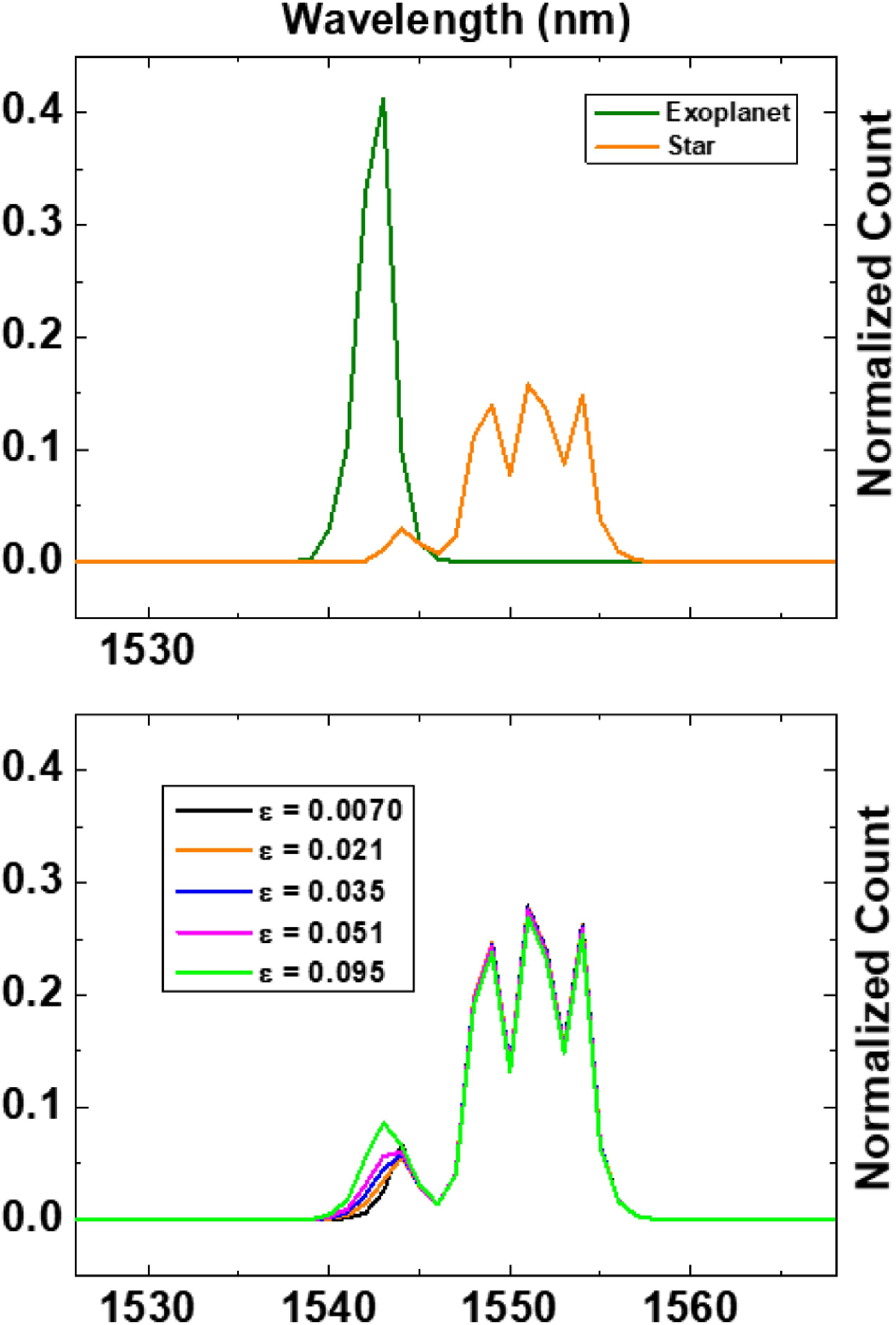Luigi Santamaria, Fabrizio Sgobba, Deborah Pallotti, Cosmo Lupo, "Single-photon super-resolved spectroscopy from spatial-mode demultiplexing," Photonics Res. 13, 865 (2025)
Search by keywords or author
- Photonics Research
- Vol. 13, Issue 4, 865 (2025)

Fig. 1. Experimental setup. A fiber coupled light emitting diode (LED) at telecom wavelength (1) inputs a motorized spectral filter (2), a 50 dB attenuator (3) and is split by a fiber beam splitter (4) to generate strong S beam simulating the star and weak P beam simulating exoplanet. The S beam is carved from LED using a fiber coupled filter (5) and free space launched with collimator (S); the P beam is free space launched with collimator (P) and carved using the free space spectral filter (6). Both beams cross two-lens (L) systems to match the beam waist with demultiplexer waist (300 μm) and are coupled with it by means of two steering mirrors each. The P beam crosses a film polarizer mounted on a motorized rotation stage (7) to control the beam intensity. The second mirror of the P beam is placed on a micrometer translation stage (8) to shift the beam position and so change the S and P separation in a controlled way. S and P beams are recombined on a beam splitter (9) and, after crossing a fixed film polarizer (7’), are coupled with demultiplexer. This polarizer is used to keep fix the photons polarization during the experiment to prevent polarization dependence of detection efficiency. The demultiplexer (10), PROTEUS-C from Cailabs, allows to perform intensity measurements on six HG modes; however, just the HG 01 HG 10 HG 00

Fig. 2. Point-like sources spectra. The figure (upper panel) shows the spectra, obtained by normalizing single-photon counts, of two pointlike sources simulating the star (orange line) and exoplanet (green line). The scan over the wavelength is performed using motorized fiber-coupled spectral filter with 1 nm as minimum settable step size. The lower panel represents the real emitted normalized star–planet spectra at different values of intensity ratio ϵ
Fig. 3. HG demultiplexed spectra at fixed ϵ C 0 N C 1 N d a ϵ = 0.021 C 1 N d a
Fig. 4. HG demultiplexed spectra at fixed d a C 0 N C 1 N ϵ d a C 1 N ϵ
Fig. 5. Scalar product quantifier. The data points show the experimentally estimated scalar product defined in Eq. (33 ), plotted as a function of d a ϵ S P ( d a , ϵ = 0.021 ) d a = 0 1 − S P ( d a = 0 ) d a d a
Fig. 6. Scalar product quantifier. The data points show the experimentally estimated scalar product in Eq. (33 ), plotted as a function of ϵ d a S P ( d a = 0.33, ϵ ) ϵ = 0 1 − S P ( ϵ = 0 ) ϵ ϵ = 0.1

Set citation alerts for the article
Please enter your email address



